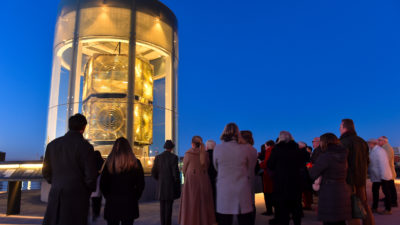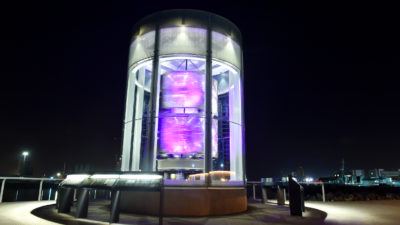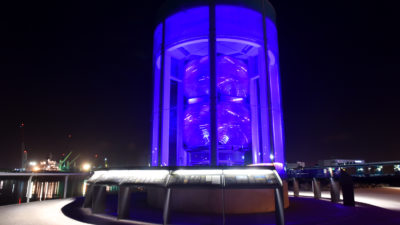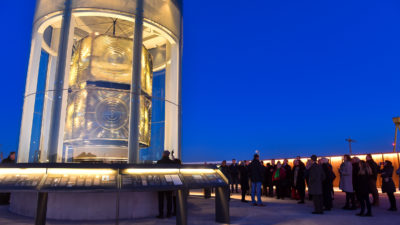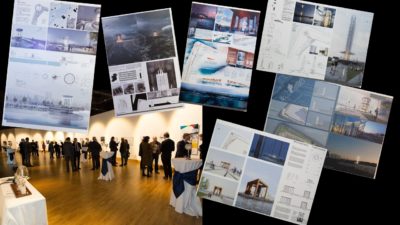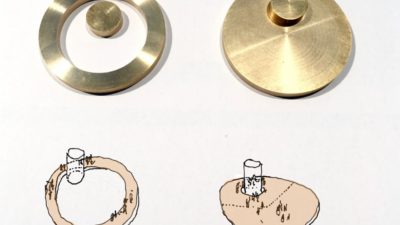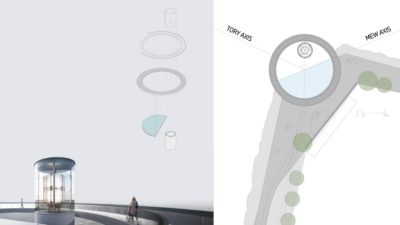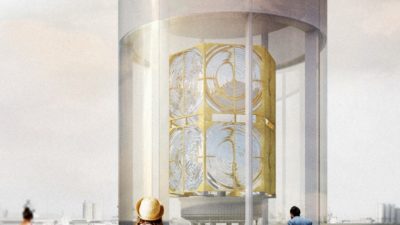History
The Great Light is one of the largest optics of its kind ever built in the world, and is around 130 years old. Weighing 10 tonnes and measuring 7 metres tall, the optic is a unique maritime heritage object with significance to Belfast's economic, maritime and industrial past. It is totally irreplaceable and is an exceptionally rare maritime artefact. It produced one of the strongest lighthouse beams ever to shine - a truly GREAT LIGHT.
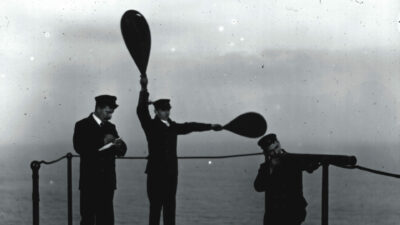
The huge Fresnel Hyper-Radial lenses of the Great Light served two lighthouses and were the largest lenses ever made in the world. The construction of the optic involved two of the most significant lighthouse optic manufacturers in the world – Barbier and Fenestre, and the Chance Brothers.
The Great Light’s lenses were originally made in 1887 for Tory Island Lighthouse, situated off Donegal. The glass lenses were made at the famous Saint-Gobain glassworks in France, and then taken to the lighthouse optic manufacturers, Barbier and Fenestre, in Paris. Here the original optic was made with 18 lenses, 6 in each of three tiers (triform) covering 60 degrees. The lenses are called Fresnel lenses as the design was invented by Augustin-Jean Fresnel in 1823. Fresnel had invented a way of magnifying and refracting light into a powerful beam we now associate with lighthouses. The Fresnel lens revolutionised lighthouse technology.
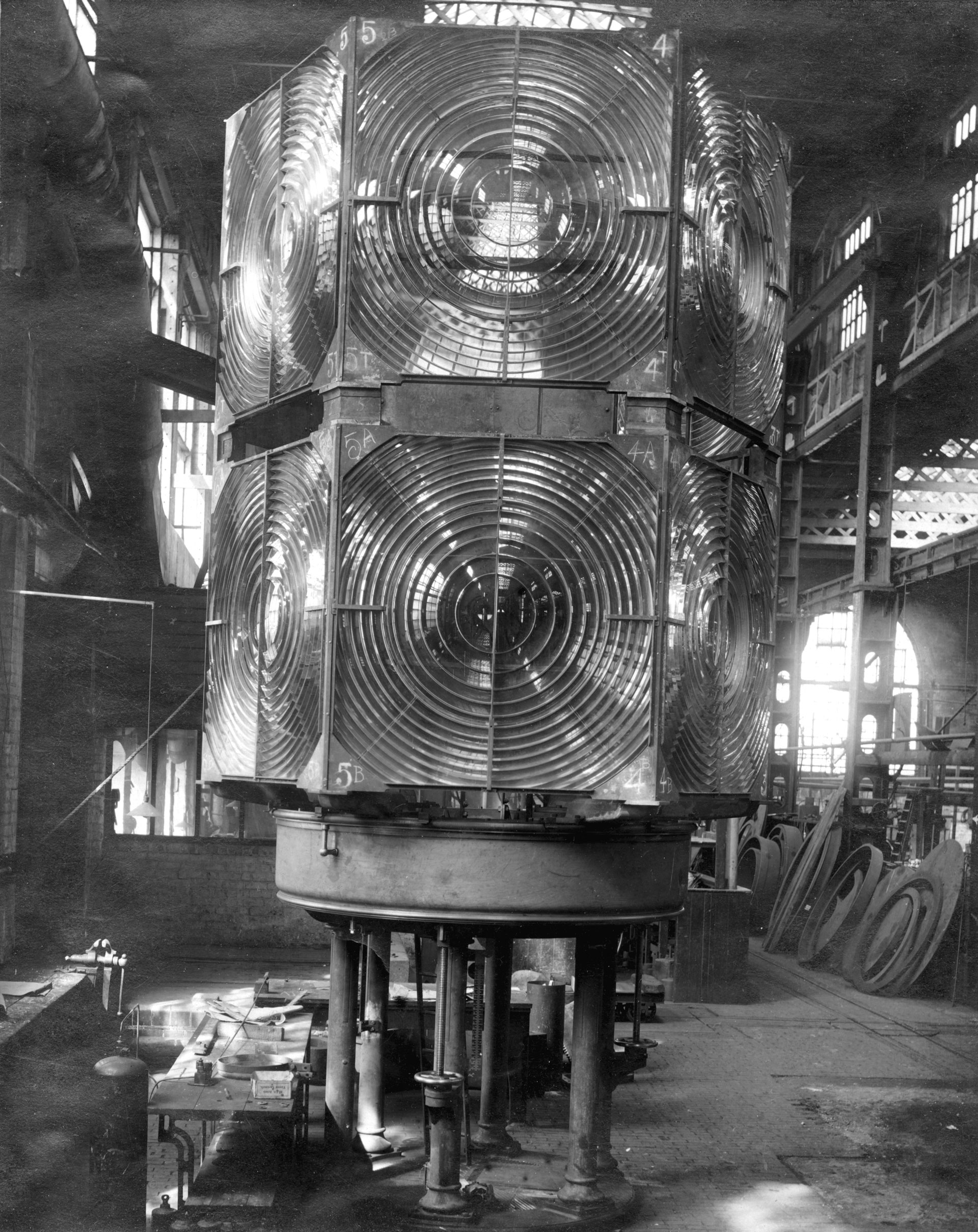
Fresnel’s lenses were organised into orders based on their focal length – with the 1st Order lens being used for large landfall lighthouses, 2nd and 3rd for coastal lighthouses, and 5th and 6th Order lens being used for harbours. With the invention of John Richardson Wigham’s massive gas burners from the 1860s, a larger lens was required. We now call these giant lenses Hyper-Radial. They were only made for 30 landfall lighthouses between 1887 and 1913, and only 20 are left, the others being lost or destroyed. They were difficult and very expensive to make.
The very first lighthouse in the world to have these massive Hyper-Radial lenses installed in its optic was Tory Island. It was the only Hyper-Radial tri-form optic ever made.
Mew Island lighthouse was built in 1884 with 18 1st Order lenses in its tri-form optic. Mew Island is one of the Copeland Islands, off the coast of Donaghadee. This new lighthouse was requested by the Belfast Harbour Commission as an important Aid to Navigation at the southern entrance to Belfast Lough, built at a time when Belfast was the world-centre of linen, ship-building and rope-making, and one of the most important ports in the world.
Mew Island’s first order optic became faulty in the early 1920s. Irish Lights commissioned the Chance Brothers in Birmingham to split the Tory Island optic to create a new optic using 8 of the Hyper-Radial lenses, four lenses with two blank panels per tier sitting on a new pedestal. This new optic went back into Tory Island lighthouse. In 1924 the Chance Brothers were asked to repeat their work to create a new optic for Mew Island using 8 of the remaining Tory Island Hyper-Radial lenses – this was the making of the Great Light. The new optic was fitted into Mew Island lighthouse and first lit on the 1st September 1928. The optic was used until 2014 when it was replaced by a solar powered LED. The optic was removed from the tower and crated, waiting for a new and safe home befitting its historical significance.
The Maritime Belfast Trust
As this optic is of immense historical importance, and guided ships to and from Belfast, Maritime Belfast became involved in 2015, working in partnership with the Commissioners of Irish Lights to secure the optic’s future locally, especially given the international interest.
Irish Lights are an all-island body, providing an aids to navigation service. Maritime Belfast were awarded funding from the Heritage Lottery Fund, Ulster Garden Villages, and Belfast City Council’s Local Investment Fund for saving, restoring and displaying the optic.
The optic was restored and housed in a new interpretive structure, designed to last for 100 years and made to resemble a lighthouse lantern room where it adds a remarkable element to the Titanic Quarter public realm. It is estimated that at least 100,000 visitors per annum will view the optic. With free public access it tells the story of lighthouses, their technological development, their light keepers, and their role in the proud maritime & industrial heritage of Belfast and Ulster.
To learn about how we discovered the history of the optic, read Dr Sally Montgomery’s blog post: The Great Light – unravelling its past.
The Design
In May 2016 the Maritime Belfast Trust, in partnership with the Royal Society of Ulster Architects, ran a Design Competition for an iconic structure to protect and preserve the Mew Island Lighthouse Optic. Twelve firms submitted proposals with Hall McKnight, a Belfast & London based Architectural Practice, named as the winners of the competition. Hall McKnight’s design was selected as the judging panel felt it clearly caught the vision of the project, and allowed the craftsmanship and beauty of this unique object to be clearly presented to a new audience.
The optic is now displayed in a landmark curved glass structure in its new location on the Titanic Walkway, which was developed by Titanic Quarter Limited and funded by Tourism Northern Ireland. The 500 metres of maritime walkway connects the Titanic and Olympic Slipways and the Alexandra Dock, linking Titanic Belfast, HMS Caroline and the Thompson Dock. The Great Light and Walkway opened to the public on the 8th March 2018.
We tracked the development of the Titanic Walkway and construction of the Great Light, which you can view as a timelapse below. Northern Visions TV also produced a documentary on the story of the Great Light, and the journey of one of the world’s rarest lighthouse optics from its former home on Mew Island to its recreation as one of Belfast’s iconic monuments. And you can watch a short video showing the Great Light rotating in its new home.


